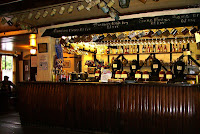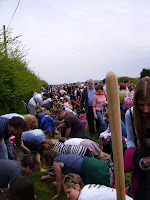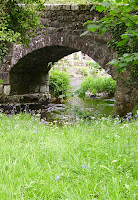Ye Olde Cider Pub
 Ye Olde Cider Bar in Newton Abbot, Devon, England is a very special place for scrumpy users........ that being me!! It is a surviving example of a rarity whose numbers have dwindled over the centuries: the cide
Ye Olde Cider Bar in Newton Abbot, Devon, England is a very special place for scrumpy users........ that being me!! It is a surviving example of a rarity whose numbers have dwindled over the centuries: the cide r house. As the name implies, this is a bar that sells cider to the public, but a cider hous
r house. As the name implies, this is a bar that sells cider to the public, but a cider hous e is not a pub - a cider house definitely does not sell any beer!
e is not a pub - a cider house definitely does not sell any beer! Once upon a time there was a large number of alehouses in England, selling only ale (beer) to the public, and similarly there were many cider houses dispensing cider to their thirsty patrons. Over the years, alehouses became public houses selling a wider range of drinks than just beer - wines and spirits included. At
Entering the bar is like stepping back in time, the decor hasn't changed for a long time.......no theme pub here! No carpets and wooden stools and settles. The furniture is an interesting feature of the bar in its own right, being fashioned from cask staves with hardwood tops. Even the bar itself is clad with staves, giving the whole place an attractive rustic look.
We caught the bus from Torquay along with Suki and Rio. The idea being that we'd be doing too much tasting to be driving!
First round and I went for Sam's heritage, Oli went for something altogether more scrumpy with it's cloudy look and very woody barrel taste! I think Rio went straight for the 'suicidal!!'
After only one round we felt the need for something to soak up the apple juice...and each got a huge Devon Pasty to munch on!
Round two and three......The different number of ciders was amazing from light and fruity to flowery ciders that just ooze appleness and to orange and well 
Infact this place also serves up MEAD!!!!!! Can you believe it.....a pub that still serves up the druids honey drink of old :) Now this made me really happy, quite literally! There is an incredible range of country wines - from birch to blackberry, parsnip to peach, sloe, cowslip, elderflower, and many more.

















































